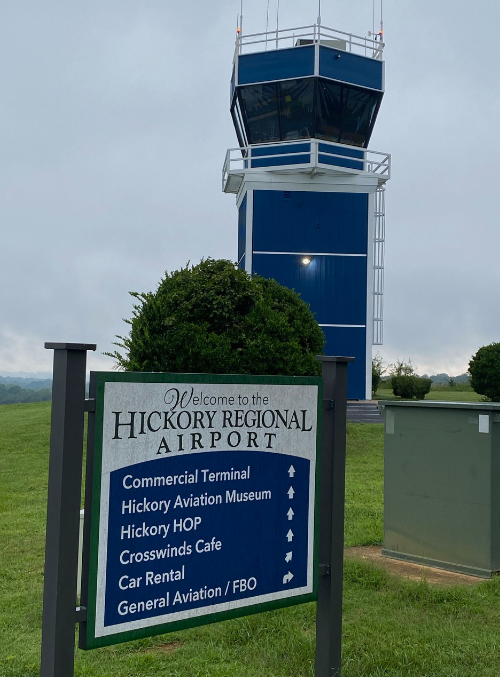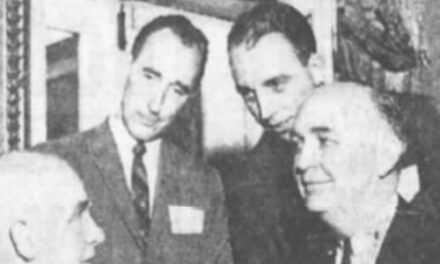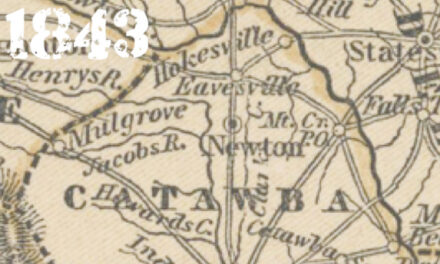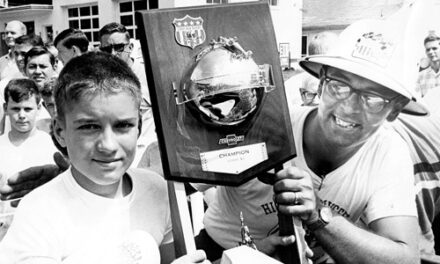
The initial cost was $200,000, quite a sum for 1938. Twenty years earlier, some in Hickory had begun to dream of an airport for the city, placed on the northwestern edge, perched atop the hills overlooking the Catawba River. In those days flight was a novelty. Few people had even seen an airplane up close, much less ridden in one, so the dream had to wait.
It took the Great Depression and the Works Progress Administration to bring a real airport to the city. As part of President Franklin Roosevelt’s New Deal, designed to get the American economy moving again, the WPA engaged in “make work” programs, constructing projects that needed building but until then, not a priority. That’s how the State Hospital in Morganton got built, along with the Blue Ridge Parkway and many other projects across the United States. That’s what the money was for, to pay for workers to construct a 2,000 foot long runway. As they graded the area to create a level spot, over 200,000 cubic feet of dirt had to be moved. All of North Carolina’s major cities had an airport, and Hickory, on the heels of its 1931 consolidation that boosted the population to over 10,000 needed one too. Actually, by the time of its opening the airport had two landing strips, 2,900 and 3,100 feet long respectively, both 500 feet wide.
Roosevelt’s New Deal, designed to get the American economy moving again, the WPA engaged in “make work” programs, constructing projects that needed building but until then, not a priority. That’s how the State Hospital in Morganton got built, along with the Blue Ridge Parkway and many other projects across the United States. That’s what the money was for, to pay for workers to construct a 2,000 foot long runway. As they graded the area to create a level spot, over 200,000 cubic feet of dirt had to be moved. All of North Carolina’s major cities had an airport, and Hickory, on the heels of its 1931 consolidation that boosted the population to over 10,000 needed one too. Actually, by the time of its opening the airport had two landing strips, 2,900 and 3,100 feet long respectively, both 500 feet wide.
Work on the project finished up in the summer of 1940 and the Hickory Airport was ready for use. The dedication came in September. Almost 5,000 showed up to hear speeches from two governors, a senator, the head of the WPA, and a gaggle of local officials about how important the airport was for the advance of modern transportation as well as Hickory itself.
Considering that the rest of the world was at war and the United States would join the Allied effort late the following year, the words of Senator Robert R. Reynolds sound ominous now but they fit the times. He told those in attendance, “we are here today to rejoice that we are able to stand in perfect safety and that we need not fear the hum of an airplane motor. We know that if a plane does fly overhead it is not a death-dealing messenger, but a plane only engaged in peaceful pursuit of commerce. That’s the way it should be and that is the way we must keep it.”
As much as the Hickory Airport was built to promote travel to the region, it also held strategic value for the coming war effort. Federal officials saw the airport as a potential base, with supplies, possibly even troops stationed there if landing facilities closer to the coast were threatened. Without knowing how far German aggression might stretch (and it did stretch all the way to the East Coast of the United States), defense officials liked the fact that the Hickory facility was nestled in the hills, “ideally situated” for future war needs.
The war came and went without such measures being implemented but over time Hickory Regional Airport has become a substantial community resource. It has played a number or roles by offering passenger feeder trips to Charlotte Douglas International Airport during the Piedmont and USAir days, it now has a first-rate aviation museum and will soon include classroom space and a destination on the City Walk network of walking space. The Airport’s attributes go way beyond just a place to catch a flight.
Photo: Hickory Regional Airport as it looks today, soon a destination on Aviation Walk.









